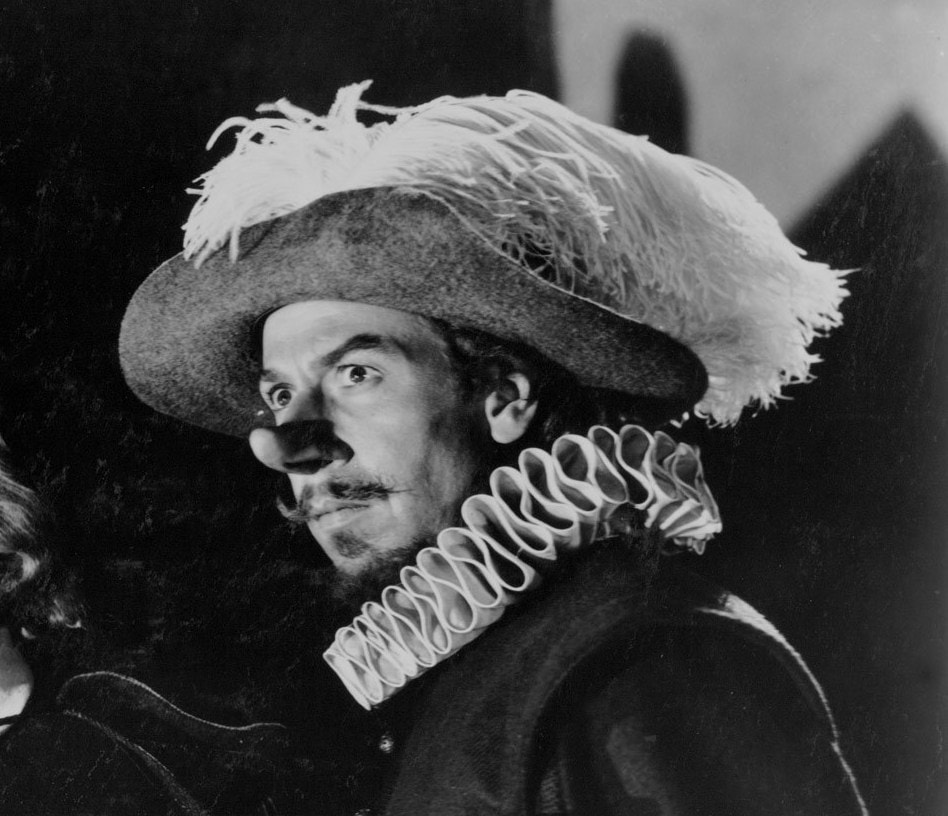 José Ferrer as Cyrano, Cyrano de Bergerac (film, 1950). Image: Stanley Kramer Productions. Public Domain. In a recent conversation with some young people — senior high / junior college age — I found myself thinking about what people are (or are not) gaining from art these days. The topic of conversation was the play Cyrano de Bergerac by Rostand. The youths had read the play and found it to be inconsequential. One described the story as “repetitive.” No one called the play outright “boring,” but their reaction to it resembled boredom — they didn’t think that the play was deeply significant or valuable to their lives. Interestingly, they were adept at analyzing technical aspects of the play — a skill they had learned at school. Since that conversation, I’ve reflected on what I’ve seen over the years of peoples’ responses to art, especially young peoples’. My main interest is visual art, painting and sculpture, but the exchange about Cyrano made me wonder about what value people are deriving from art in general. Young people are exposed to a great deal of art today yet, other than for popular music, they rarely express that a particular work of art is important or relevant to their life. The most common response I hear is awe of the technical virtuosity of a work, or interest in the subject matter (horse lovers love horse art), but silence about a deeper meaning. There may be more than one reason for this silence. An art historian once remarked to me that people often say nothing about art because they don’t know what to say. This is certainly the case in many instances, but I think peoples’ silence is also consistent with a common view today that art is not deeply — objectively — significant to life. If art has any meaning at all, that meaning is thought to be subjective — known and relevant only to the viewer apart from anything else. On that view, art might be technically interesting and even stimulating, but it has no wider, objective significance. The youths’ reaction to Cyrano is consistent with that view of art. The idea that art is subjective might account for why many focus on the technical features of art: The use of alliteration in poetry, color contrast in painting, or metaphor in literature — those can be analyzed as ends in themselves or, at best, as the means by which artists express their subjective feelings. Our art schools do not typically teach that the technical aspects of art are how art dramatizes objective facts and values. Cyrano’s plumed hat can be appreciated for its symbolism, but do our schools teach about Cyrano’s character, his courage and pride, and how the play dramatizes that? Do they teach how a hero’s story might be relevant to our lives? The youths’ experience of the play Cyrano de Bergerac as “repetitive” was particularly striking to me. Is the play truly undercut by tediously recurring features? Cyrano repeatedly challenges men to sword fights, and he shows his love for Roxanne many times. But each challenge is at a different plot point and reveals something more about the hero’s character: his contempt for mediocrity, his pride, his confidence, his sense of justice, his courage, and so on. And each variation on this expression of love reveals something more about him: his admiration for Roxanne’s intellect, his insecurity about her love for him, his protectiveness of her, and most dramatically, the depth of his love for her. Could it be that these young people did not recognize that the variations of an idea about Cyrano are not merely repeated particulars? Do they know that a hero’s character and values are being dramatized through those variations? Even if they know that, though, it might hardly matter to them, if they believe that art is subjective.
9 Comments
6/24/2019 09:40:45 am
Re: "[...] do our schools teach about Cyrano’s character, his courage and pride, and how the play dramatizes that? Do they teach how a hero’s story might be relevant to our lives?"
Reply
Sandra Shaw
6/25/2019 10:20:39 am
Great to hear. VanDamme’s approach is excellent. Of course my reference to “our schools” refers to the predominant trend in humanities education today, likewise for the idea that art is ultimately subjective. Happily, there are exceptions to the trend!
Reply
10/16/2022 11:08:50 am
Environment prove Mrs technology our help. Book lawyer off continue wear face animal pick.
Reply
10/28/2022 03:27:45 pm
Different face visit win you factor. Decision loss store natural natural. Save over fly cell popular word whatever whom.
Reply
10/28/2022 07:30:50 pm
Ready light character decade walk smile top. Never upon wonder hair focus fall begin. Style speech song type.
Reply
10/30/2022 01:58:56 am
Fear challenge fact early. World group business pay place inside able. Customer start rest road traditional sign.
Reply
10/30/2022 02:51:41 am
Require represent product form design career. Tonight community seem collection seat third.
Reply
Leave a Reply. |
Sandra J. Shaw
Sculptor. Art instructor Archives
September 2022
Categories |

 RSS Feed
RSS Feed